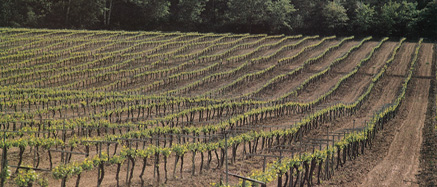DO Cava
-
Bodegas Sumarroca (Subirats, Barcelona)
-
Cavas Masachs (Torrelles de Foix, Barcelona)
History
The origin of Cava is associated to the splendour of Catalan viticulture by mid XIXth century. The studies of microbiology carried out by Louis Pasteur applied to wine, involved a control of the second fermentation in the bottle and the discovery of cork allowed to avoid the losing of bubbles produced in the wine. The Champenoise or traditional method was born this way.
In the XIXth century some families from Sant Sadurní d’Anoia started to investigate that new technique of elaboration applied to vineyards on the area, as a result of their studies and attempts related to the prestigious Institut Agrícola Català de Sant Isidre. Cava was born consequently achieving its own peculiar identity different from any other sparkling wine of quality.
In 1872 the first bottles of Cava were produced in the town of Sant Sadurní d’Anoia following the traditional method of second fermentation in the bottle. Thus, Cava production started and the town became the main capital of Cava.
Along the decade of 1920, Cava consolidated into the Spanish market while its international consolidation was reached during the 80’s. Today it is one of the most dynamic and successful vitiviniculture sectors, essentially Catalan vitiviniculture, with a total production of about 220,000,000 bottles per year that reach consumers worldwide.
Production Area
The Cava Region comprises a total of 159 municipalities in the provinces of Barcelona (63), Tarragona (52), Lleida (12), Girona (5), La Rioja (18), Alava (3), Zaragoza (2), Navarra (2), Valencia (1) and Badajoz (1), which together conform the delimited Cava producing area and are therefore the only ones with the full legal capacity to produce this type of sparkling wine and market it under this name.
The municipality of Sant Sadurní d’Anoia is the heart and origin of this region, its driving force. Its spirit lies not merely in an area, a territory, but in the tradition, the style of winemaking, a blind faith in the quality of the product and a keen enthusiasm in disseminating this special beverage.
The Vineyard
Among other reasons, Cava came into being as a result of the radical transformation of vineyards because of the invasion by phylloxera.
The properties and characteristics of Cava owe themselves to the soils of the vineyards, the varieties of grape used and the climate.
Vine growing stretches from the Mediterranean coastline to the highest areas, at an altitude of approximately 800 m. However, it is in the central areas, at an altitude of 200 to 300 m. where the largest vine growing area is to be found.
The climate is Mediterranean, sunny, with mild winters and moderately hot summers.
The characteristics above, combined with a moderate rainfall spread throughout the year, create an ideal microclimate for vine growing and the maturation process of the grapes.
Harvest takes place from mid August to the end of October. Grapes are transported to the cellars in boxes containing 25-30 kg or in stainless steel trailers.
Oenologists combine the wines obtained from the different varieties in what they consider the ideal proportion in accordance with the characteristics of their products.
Wine-making
The quality achieved by Cava starts in the vineyard. Harvesting the grapes, arranging and transporting them to the cellars is carried out with great care and as speedily as possible to reduce the time elapsed between harvesting and obtaining the must as much as possible.
When the grapes reach the cellars the process of making the cuvée starts, extracting the must with a gentle pressing to obtain high quality must.
This must is then clarified, and the fermentation process starts using selected yeast, under strict temperature control to make the most of the aromas of each variety, each of which is vinified separately.
Once the vinification is complete, the winemakers determine the proportion of each type and variety to be used for the coupage, which will produce the various cavas. Wines using different varieties complement each other to produce a wine with its own personality which defines the characteristics of each brand.
More info: http://crcava.es


